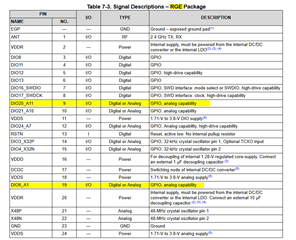Hi , members
SDK Version : 7_10_00_35
CCS Version : 12.2.0.00009
I used the Uart method of the ROM Bootloader to update the Application, but the problem I am currently encountering is that assuming that the RX and TX of my Uart are set in the DIO12 and DIO13 groups respectively today, if the update fails and the CCFG area has been Erase, then The RX and TX of Uart will jump back to the default group of DIO20 and DIO22, but my CC2340 only has 24 Pins, so there will be no DIO20 and DIO22. This situation will cause it to be updated later if it is updated. Unable to update, how do I change the default Uart to DIO12 and DIO13?


